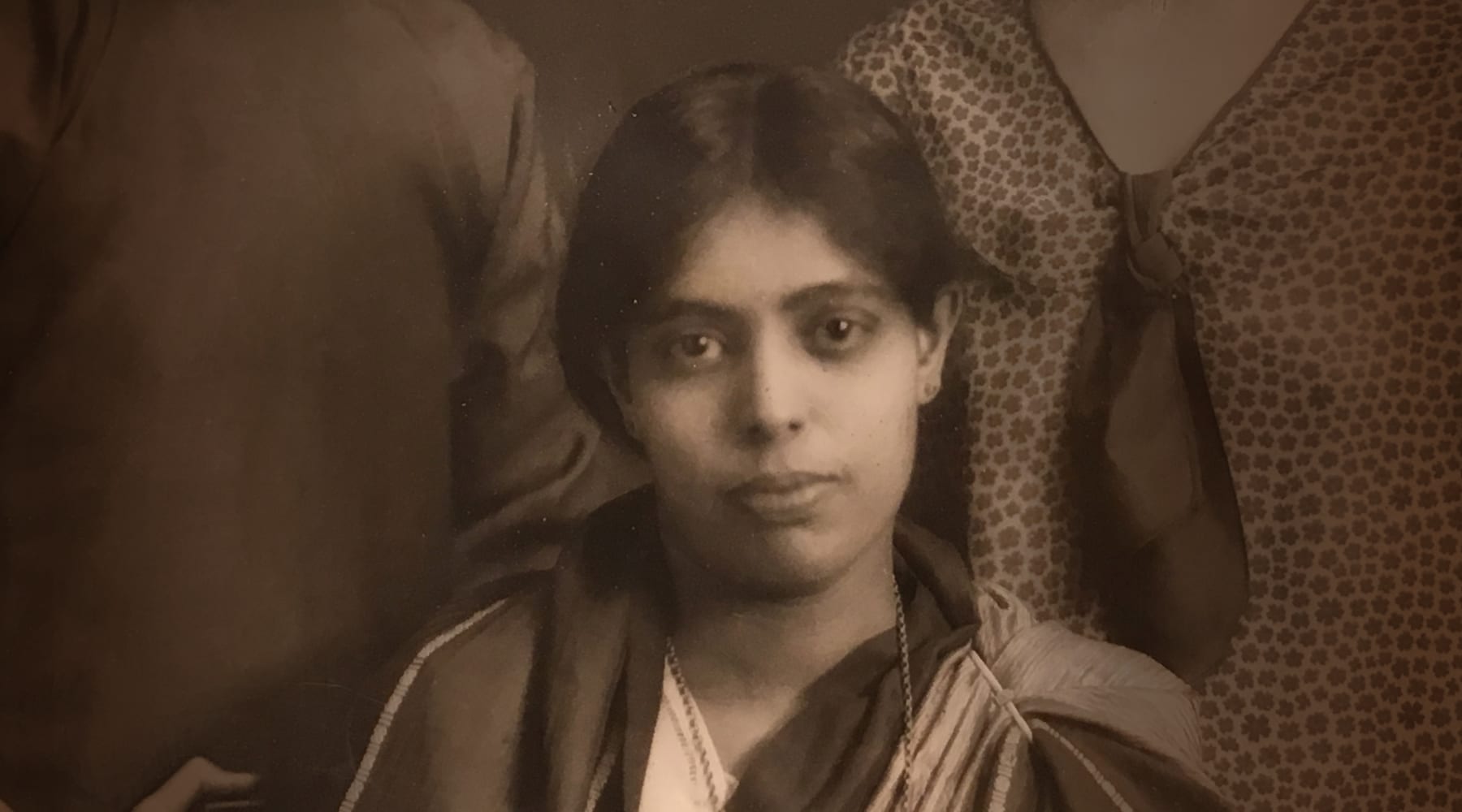
Janaki Ammal Edvaleth Kakkat
A Woman of Many Firsts
Janaki Ammal led a remarkable life. Her persistence and dedication to research changed her country’s food supply and its economy; her status as an unmarried woman of lower caste did not deter her from becoming India’s first woman botanist. As the first woman from India to earn a Ph.D.—and the first woman in America to earn a Ph.D. in botany, at a time when only 1% of women in India were literate—her story embodies the success of the Barbour Scholars program. Ammal’s graduate education at Michigan fueled a career dedicated to increasing knowledge of the plant world, and she contributed years of work to help us understand the cytology of plants, the diversity and characteristics of native species in India, and the importance of preserving natural areas.
The tenth of 19 children, Ammal was born in Tellicherry (now Thalassery) in the state of Kerala, into a family that encouraged study. Ammal’s interest in the natural world began in childhood; her father wrote books about birds and kept a home garden. As her sisters followed the expected path into arranged marriages, she instead chose to pursue a bachelor’s degree at Queen Mary’s College, Madras, and an honor’s degree in botany from Presidency College. She taught for three years at the Women’s Christian College in Madras before the opportunity of a lifetime presented itself: she was offered the Barbour Scholarship at the University of Michigan. Barbour’s niece, Geeta Doctor, wrote that Ammal was detained at Ellis Island, despite being awarded a prestigious scholarship. Her release reportedly came when she was mistaken for an Indian princess, attired in traditional silks with long flowing hair—she told her niece, “I did not deny it.” She joined U-M’s Department of Botany in 1924, earning her M.S. and then Ph.D. in 1931. Ammal’s research in plant cytology focused on the hybridization of plants, producing interspecific and intergeneric hybrids.
After completing her studies at Michigan, Ammal’s career had three distinct phases. First, she was employed by the Imperial Sugar Cane Institute where she studied the cytology of sugarcane plants in order to develop a sweeter hybrid that would allow India to reduce its import of the product from Indonesia. Her work was critical to India’s effort to grow more food and increase its agricultural independence. In 1940, she was invited to Norwich, England to work at the John Innes Institute alongside geneticist Cyril Dean Darlington. Within five years they completed the Chromosome Atlas of Cultivated Plants, which remains a key text to botanists today. When the Royal Horticultural Society at Wisely offered her a position as a cytologist, she became its first salaried woman staff member.
In 1951, Prime Minister Nehru requested her return to India. Ammal was appointed as government supervisor of the Botanical Survey of India, established in 1890 by Kew Gardens to collect and survey India’s flora.Ammal’s work served to record indigenous knowledge of plants and of their role in tribal culture. Her research on the hybridization of plants to India’s tropical climate sped the country’s recovery from a decade of brutal famines, including the Bengal famine in 1943 that killed close to 3 million.
Ultimately, she became alarmed by the level deforestation that the agricultural push to grow more food had produced, and in her later years worked to catalogue India’s plants that she feared would be lost forever. 25 million acres of land had been reclaimed by the government for food cultivation. Ammal used her status as a leading scientist to defend an important region of rain forests in her home state of Kerala. The Save Silent Valley campaign eventually caused the government to abandon its plan to flood the ancient forest for a hydroelectric project. In 1984, nine months after Ammal’s death, it was dedicated as a national park, preserving one of the last undisturbed tracts of the South Western Ghats mountain rain forests.
Janaki Ammal’s accomplishments would be extraordinary in any time, but her role in the history of science and her country is even more amazing considering the limits on women, and women of lower caste, in her lifetime. She was described as a staunch Gandhian Buddhist, observing vows of chastity and austerity.Her niece quotes her as saying, “My work is what will survive.” In the forests of Kerala, in the rose and magnolia species named in her honor, and in the path she created as a Barbour Scholar, her inspiration lives, too.
